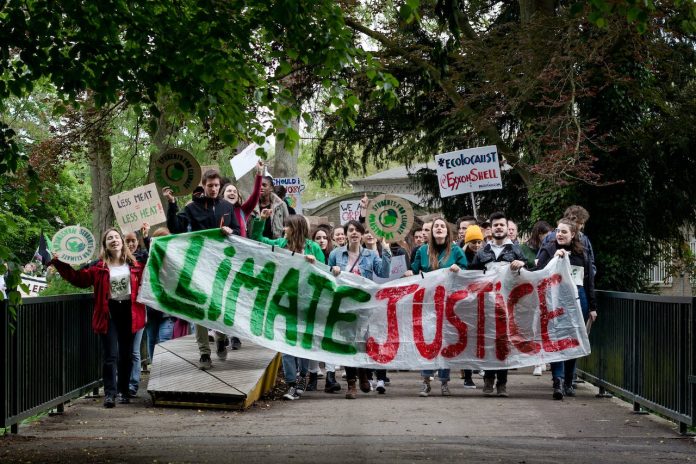Anya Schiffrin, Director of the Technology, Media, and Communications Specialization at Columbia University’s School of International and Public Affairs
Dylan W. Groves, Assistant Professor of political science at Lafayette College
Joseph E. Stiglitz, former chief economist of the World Bank and University Professor at Columbia University and a Nobel laureate in economics.
NEW YORK – Although news consumption soared during the COVID-19 pandemic, subscriptions have since fallen, and news outlets around the world have been laying off reporters or even shutting down altogether. That is bad news for all of us.
Our new UNESCO brief highlights recent research that demonstrates just how important high-quality information is to a well-functioning economy, society, and democracy. New studies in economics and political science use rigorous methods to confirm what journalists already knew: that their work has a positive influence on democratic norms, civic engagement, and governmental and corporate accountability. By building social trust and promoting human rights, serious, credible reporting also supports economic performance and sustainable development.
The 2021 UNESCO Windhoek+30 Declaration – which reaffirmed the importance of information as a public good (one from which everyone benefits, and none are excluded) – was based on numerous studies from Africa, India, Latin America, and the United States. This literature shows that high-quality news and journalism promotes accountability and responsiveness even amid rising tides of misinformation and disinformation. Fact-checking can indeed counter the lies and distortions now flooding societies around the world.
Moreover, high-quality journalism remains more effective than social media in disseminating accurate, trustworthy news. While technology can enhance the spread of good information, it is currently doing the opposite. Large digital platforms regularly downrank news, claiming that users are more interested in other categories of content. But Pew Research Center data suggest that news consumption across platforms has remained stable (at least in the US) since 2020. And with more people voting in elections this year than ever before, there has never been a greater need for quality reporting.
Everyone – even those who do not invest in journalism themselves – benefits from the investigation, curation, and dissemination of trustworthy and useful information. But this public good is unlikely to be adequately provided in a free market, even with the help of public-spirited philanthropists, aid organizations, media companies, and governments. In many markets, their support is not enough.
Governments, especially, have a responsibility to ensure the provision of public goods. Enabling high-quality journalism requires legal regimes that protect free expression and the “right to tell.” But that is not enough. For journalists to do their jobs, there also must be laws and enforcement mechanisms in place to ensure the right to access information: the “right to know.” While many countries have passed such laws, they are rarely enforced. When public authorities even bother to respond to information requests, they often do so only after long delays, and with extensive redactions.
Legacy media outlets are a key part of the media ecosystem and require continued support; but so do smaller outlets and those targeting underserved areas. Some promising ideas for supporting journalism include providing special funds or tax breaks (such as payroll tax credits or targeted value-added-tax (VAT) reductions) and issuing news-subscription vouchers. During the pandemic, governments around the world launched variations of these policies, thus producing a wide range of models that can now be emulated.
Another crucial step is to ensure that journalists are appropriately compensated for their work. Big Tech (the proprietors of search engines, social media, and most artificial-intelligence platforms) relies on news media to engage users and improve its products. Since tech firms do not produce news themselves, they have no way to fulfill users’ demand for high-quality news and search results without the content provided by journalists. However, they have long used content produced by journalists without providing much (if any) compensation, thus depriving media outlets of a major revenue source: advertising. This cycle is destroying the information ecosystem on which they, and our society, depend.
Many countries have helped sustain high-quality journalism through investments in independent public broadcasting. Healthy public broadcasting institutions build social trust and generate an important spillover benefit: competition that forces private media companies to hold themselves to a higher standard. The institutional structures that facilitate the development of public broadcasting are well-known; what is required is the political will to establish the necessary frameworks.
A general principle in economics is that without public support, there will be an undersupply of public goods. Unfortunately, quality journalism is fast becoming Exhibit A for this principle, despite rigorous scholarship demonstrating its importance. Journalism’s business model is threatened by the rise of AI and the power of tech monopolies that distribute news without paying a fair price for it, and this is happening just as misinformation, disinformation, and political polarization are magnifying the dangers of journalism’s decline.
Around the world, there is a growing sense that democracy is in decline. An important step toward reversing this is to enhance support for quality journalism, starting immediately. The costs of inaction may be enormous.
Charles Telfair Centre is an independent nonpartisan not for profit organisation and does not take specific positions. All views, positions, and conclusions expressed in our publications are solely those of the author(s).
Copyright: Project Syndicate, 2024.
www.project-syndicate.org
Main Photo by The Climate Reality Project on Unsplash














